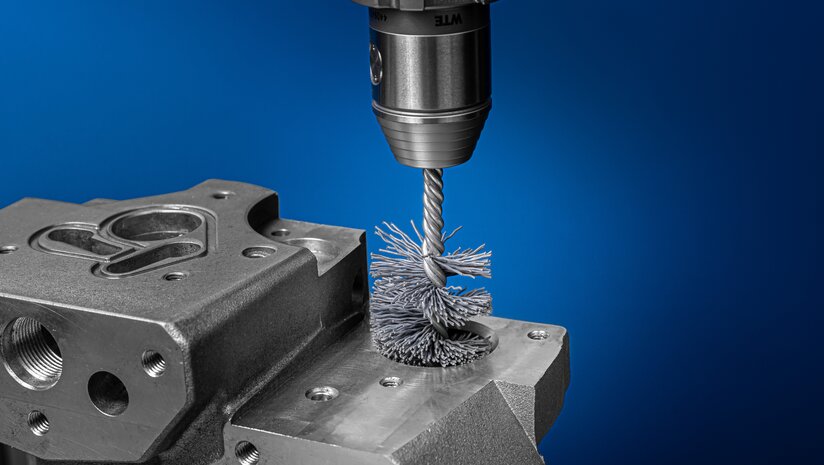
Bore cleaning
Cleaning bores is primarily a matter of removing slightly adhering burr residues by mechanical means.
What is bore cleaning?
When cleaning bores, it is primarily a matter of mechanically removing slightly adhering burr residues.
Why bores need cleaning.
In addition to the removal of burr residues as the primary goal in bore cleaning, the cleaning of a thread or a bore may also be necessary to remove adhesive build-up due to oil, cooling lubricant or emulsion.
Caution: Even if the thread has already been blown out with compressed air, there may still be chips in the thread!
Which tools do I use for bore cleaning?
For cleaning bores we recommend classic Osborn tube brushes with crimped or straight wire and brushes with microabrasive filaments.
Micro-abrasive tube brushes are predestined for fine cleaning and deburring work due to their geometry. Above all, precision parts from microelectronics, aerospace, hydraulic/pneumatic components, injection or pump systems should be mentioned here. It is a matter of cleaning transverse bores, filigree control parts, valve housings, O-ring recesses and other cylindrical workpieces. The filaments are available as silicon carbide or aluminium oxide in grit sizes from 600 to 1000.
Micro-abrasive tube brushes are very flexible tools. A wide range of brush diameters is available to machine precision parts. Especially with aluminium oxyide filaments, the brushes are used for fine machining of non-ferrous metals. They can be used on hand-guided machines as well as with CNC machines and machining centres.

Microabraisve tube brush.
Classic tube brushes are used for cleaning bores mainly with crimped or straight wire. The crimped wire is characterised by a gentler cleaning performance, as it adapts better to the component geometry. Designs with straight wire work more aggressively.
Many tube brushes have a thread connection at the end of the shaft as standard. As an alternative, the shaft of the brush can optionally be provided with standardised clamping surfaces for tool holders and then be used on CNC machines and machining centres.
Please note that the cleaning results basically depend on the correct diameter of the brush (oversize to the bore). But also the speed and the direction of rotation must be chosen correctly.
You are undecided which brush is the right one for your application? Or you already have brushes in use and are still looking for improvement?
Our application engineers will help you to achieve an optimum cleaning result and ensure that the right brush is operated with the correct parameters in order to achieve a long service life and short process times as well as to keep the cost-per-part as low as possible. Contact us!